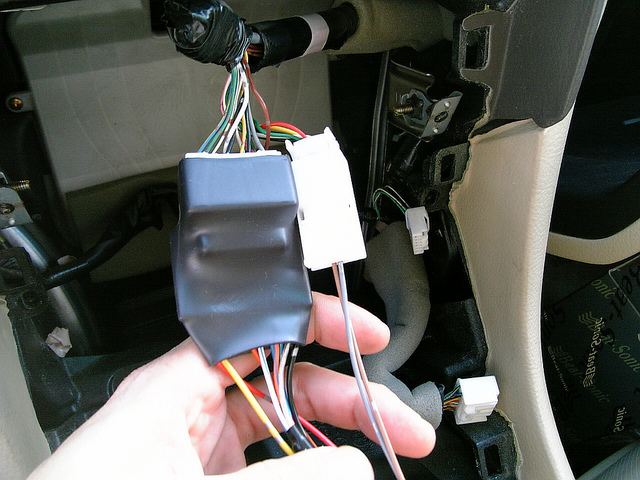
Photo by Moto “Club4AG” Miwa (Flickr)
Mercedes-Benz is the type of brand that screams value, so an owner has to wonder when it’s OK to be cheap with replacements. Should a car owner pass off high-value original equipment manufacturer (OEM) parts to wander through the dubious world of aftermarket Mercedes parts and find something barely acceptable? Well, that answer has many caveats. Here are some of the pros and cons of choosing to go with Mercedes-Benz aftermarket parts and accessories.
Pros
- Better Cost: This is the most obvious factor, with Mercedes aftermarket parts costing a fraction of the OEM versions, sometimes even hundreds of dollars less.
- Availability: The German parts industry is flooded, so Mercedes-Benz aftermarket parts are easy to get. They’re available at many online parts stores, like PartsGeek. You can get parts in a much shorter period of time than trying to work with a dealer.
- Wide Selection of Options: Unlike with OEM parts, where there’s only one possible seller, within the aftermarket industry, there are many companies all making the same part. Because of that, you can find a huge array of options at competitive prices. This is also a con because you can easily find a bad brand with foreign factories that product shoddy work; however, within the aftermarket parts market, you can also find great brands like Bosch.
- Better Quality: Often, you can find the same part as what a dealer provides, sometimes even in the same exact box. While, again, quality can vary depending on the brand, you can still find great parts that are held to high standards. By reverse engineering these parts, sometimes the top aftermarket companies can even discover weaknesses and craft better parts than the OEM versions.
Examples of Mercedes Aftermarket Parts You Can Buy and Feel Good About
- Tires
- Air filters
- Oil filters
- Batteries
Cons
- Quality Issues: Disreputable brands and inconsistent quality due to the lack of strict guidelines makes the aftermarket industry notorious among parts geeks. For many years, this was exclusively the case. Now, with some amazing aftermarket brands doing some great work, there are many exceptions to what was considered a hard-and-fast rule. The problem is that the consumer needs to do the homework to find out which brand is good and which isn’t, which is time-consuming.
- Warranties: Unlike with OEM parts, which often have warranties, the majority of aftermarket parts don’t have any sort of guarantees.
- Compatibility: Sometimes, with certain parts, things are never going to really “line up.” The aftermarket version is never going to work as well as the OEM version in these cases. If you want guaranteed compatibility, go with the OEM.
Examples of When You Should Probably Stick With OEM Parts
- Any type of sensor
- Alternators and starters
- Body repair parts
- Pumps (such as water pumps)
- Any part that hooks up to a unique feature (such as uniquely shaped windshield wipers)
Other Factors
Of course, all of this should be taken into consideration along with your own budget and the life expectancy of your vehicle. Do you plan to sell your car soon? If so, you can purchase discounted aftermarket Mercedes parts that may give out sooner and save yourself some money. If not, you might want to find the best new part you can find, either OEM or aftermarket. In all cases, researching and getting expert opinions should be a top priority.
